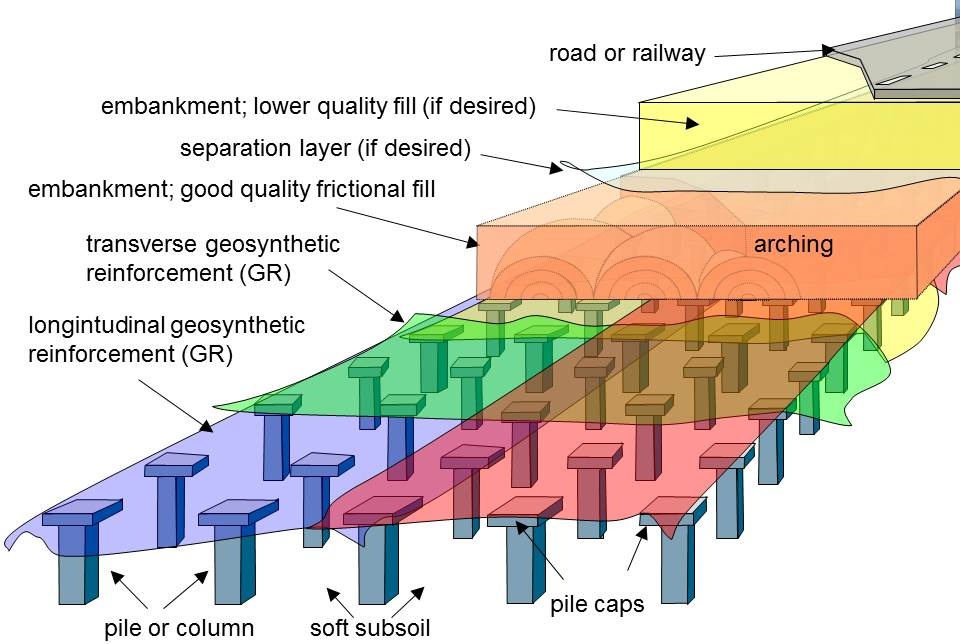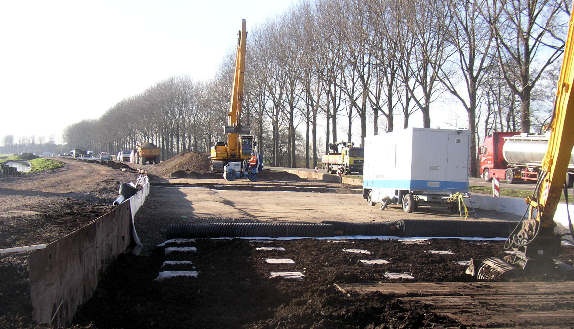

16:15 session D2: Three paper presentations at ECSMGE24 in Lisbon, Portugal:
9:00-10:00: State-of-the-Art Lecture by Suzanne van Eekelen at ECSMGE24: Basal-reinforced pile-supported embankments, dealing with risks and safety (paper 1074, co-authors Piet G. van Duijnen and Timo Schweckendiek)
Invited lecture to be announced later, in-person and online
to ECPMG 2024 in Delft, Netherlands: Several lectures on physical modelling research on piled embankments
to Two-day course on basal-reinforced pile-supported embankments in Delft, Netherlands, organized by PAO Techniek and Management
Deltares has been conducting research on pile embankments for over 20 years. You can find our papers at Google Scholar or the Deltares knowledge platform.
The results significantly contributed to the development of the Concentric Arches (CA) model, which was adopted in the Design Guideline Basal Reinforced Piled Embankments.
Currently, Deltares is involved in research on for example:
The Design Guideline Basal Reinforced Piled Embankments can be purchased at Taylor&Francis Group/CRCPress or Amazon.
This paper provides a summary and this free and open Excel file contains the main equations. The guideline:
Prof. Richard Bathurst has written a review of our design guideline, which you can for free on the Geosynthetics International website.
Suzanne van Eekelen received her PhD on basal reinforced piled embankments on 1 July 2015.

For the doctorate, the Deltares laboratory conducted a series of experiments, reported in Van Eekelen et al., 2012a. Based on this, Van Eekelen developed the new Concentric Arches design model for the basal reinforcement of the piled embankment (Van Eekelen et al., 2012b, Van Eekelen et al., 2013). This model was validated with measurements from seven full-scale projects and four series of scaled model experiments (Van Eekelen et al., 2015). The calculated results closely match the measured results. Suzanne van Eekelen received several awards for her work on basal-reinforced piled embankments.
The Concentric Arches model. The loads are transported along the hemispheres and the 2D arches, towards the piles, the geosynthetic reinforcement and the subsoil. This model is available in excel: excel file with Concentric Arches model.
The results of the doctorate study were adopted in the 2016 update of the CUR226 Dutch Design Guideline for Basal Reinforced Piled Embankments.
A piled embankment consists of a foundation on piles, with on top of that an embankment. The bottom section of the embankment is composed of a granular material and reinforced with one or more geosynthetic layers. The embankment can be raised with sand or granular material. The piled embankment is finished with a road or a railroad construction.

Within the granular layer, the load is transferred towards the stiffer, less-moving elements. As a result, the load follows paths that are more or less arch-shaped. This phenomenon is called soil arching.

The Dutch version of Piled Embankments: Paalmatrassen.